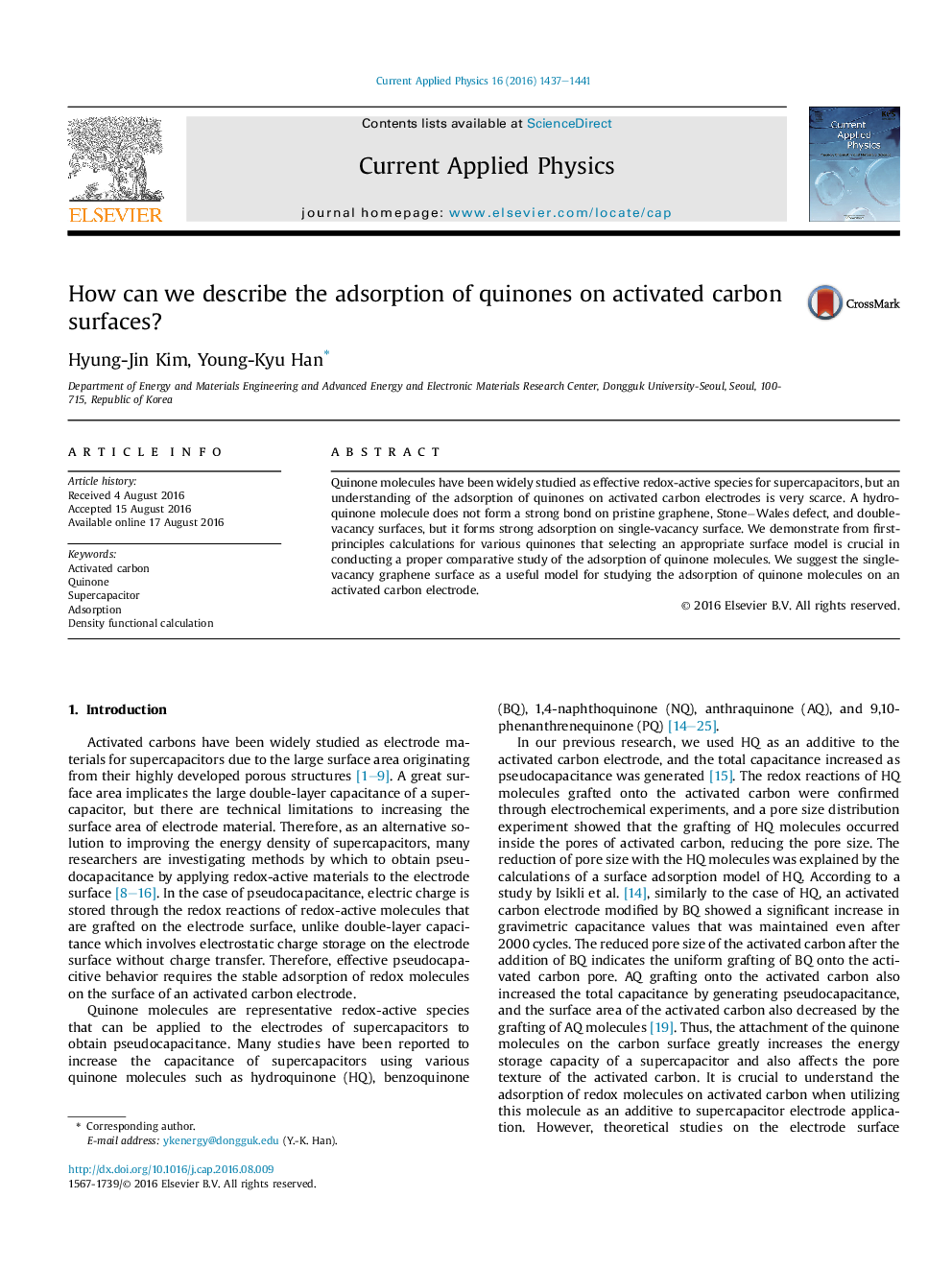| Article ID | Journal | Published Year | Pages | File Type |
|---|---|---|---|---|
| 1785473 | Current Applied Physics | 2016 | 5 Pages |
•Quinone adsorption on activated carbon is studied by first-principles calculations.•Various popular quinones adsorbed on several defective surfaces are examined.•This work suggests a single-vacancy graphene model for activated carbon surface.
Quinone molecules have been widely studied as effective redox-active species for supercapacitors, but an understanding of the adsorption of quinones on activated carbon electrodes is very scarce. A hydroquinone molecule does not form a strong bond on pristine graphene, Stone−Wales defect, and double-vacancy surfaces, but it forms strong adsorption on single-vacancy surface. We demonstrate from first-principles calculations for various quinones that selecting an appropriate surface model is crucial in conducting a proper comparative study of the adsorption of quinone molecules. We suggest the single-vacancy graphene surface as a useful model for studying the adsorption of quinone molecules on an activated carbon electrode.
